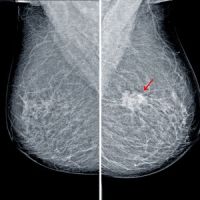At a 30 November panel session at RSNA 2021, five key opinion leaders from academia and industry discussed the state of artificial intelligence implementation in radiology and adoption strategies moving forward.
Dr Paul J. Chang, professor of radiology and vice chairman of Radiology Informatics at the University of Chicago, described the state of the landscape for implementing artificial intelligence (AI) in radiology as a ‘trough of disillusionment’. He illustrates his description using a graphic of the Gartner Hype Cycle, where disillusionment follows escalating hype. Companies and venture capital money are pouring into radiological AI technology, but user organisations have suboptimal adoption.
Dr Chang said: ‘We’re right in the middle of this phase where people are throwing millions of dollars at companies and yet when you look at the numbers, there’s not a lot of great adoption going on … People are still kind of dipping their toes in the water, just testing a few algorithms here and there.’ To hasten AI adoption, radiology leaders and other health care stakeholders must convince hospital executives that the technology makes financial sense.
Dr Nina Kottler, radiologist and associate chief medical officer at Radiology Partners, the largest U.S. physician-owned and physician-led radiology practice, described how algorithms her group created for initiating workflow offered a greater return on investment (ROI) than algorithms related to image interpretation. She explained: ‘We wanted to create something to help the radiologist as they work in their systems… And when we created that case and proved that it worked, the organisation got very excited.’
Dr Luciano Prevedello, associate chief clinical information officer at Ohio State University Wexner Medical Center has implemented four FDA-approved AI-based applications at his facility. Based on his experience, he said that in pitching AI-based solutions, explaining how they differentiate from their peers and clearly stating the expected financial return is essential. He stated: ‘You have to ask, “will the quality that this application is bringing to the table be a business advantage of your organisation?’… If we are one of the few organisations that can do that, then it’s something we can advertise and get more patients as a result.’
Dr Harvi Trivedi, MD, emergency radiologist at Emory University and an AI researcher in AI, revealed his insights after interviewing over 24 stakeholders. Applications that help organisations capture more patients were a more attractive investment than those that improve radiologist efficiency. Thus, AI applications that bring more patients back for follow-up imaging have better potential to increase an organisation’s revenue. Conversely, single-solution applications are becoming increasingly less attractive to health care organisations. Dr Trivedi adds that ‘We’ve got to think bigger, we’ve got to think about integration.’
In a pre-recorded presentation, Dr Mona Flores, global head of medical AI for NVIDIA, observed that the AI market is expanding and investment is increasing, but adoption remains low. Only one-third of organisations now utilise AI in their practices.
Dr Chang concluded the session by adding that while the radiology profession faces burnout and staffing shortages, complexity and demands from colleagues are increasing. ‘We barely get through the worklist as it is, and now there is this extra requirement to add more characterisation of image datasets… We need some help right now because what we’re doing is not sustainable… The time for AI is not now, it’s yesterday.’
Source:RSNA Daily Bulletin



























